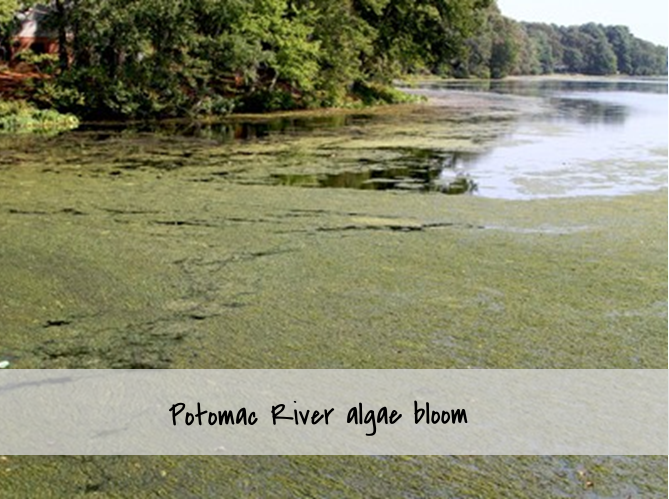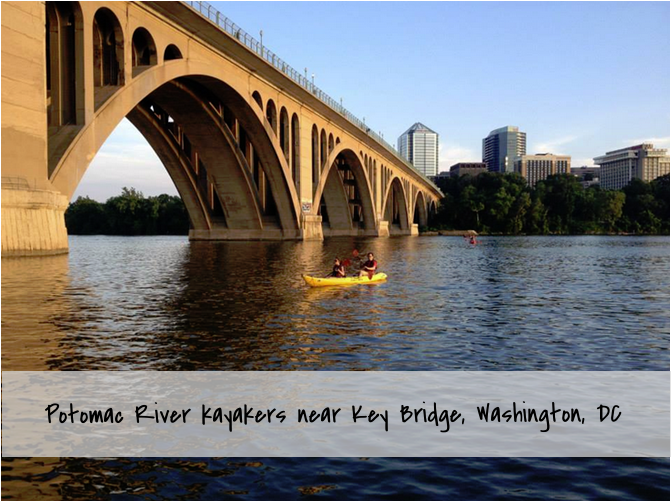Our Nation's River: A Troubled Past, A Bright Future
/Potomac Conservancy's Policy Manager, Amanda John, provides an important history of the challenges our Nation's River has overcome and delivers a timely and urgent message about our path towards a healthy and safe Potomac.
The rivers flowing through our Nation’s Capital should be a point of pride for Washington, D.C and all of the United States. But instead, the Potomac and Anacostia Rivers have a reputation for being degraded with trash, human waste, toxic contaminants, and increasing rates of polluted urban runoff.
Fortunately, The District’s waterway cleanup effort, led by the District Department of Environment, has made tremendous strides this year and throughout the last decade. And rightly so; 90% of the D.C. Metro Area’s population receives its drinking water from the Potomac River.
Yet, we have a long road ahead of us before our community can achieve healthy, swimmable, and fishable waters. Residual toxics in riverbed sediments, intersex fish, and polluted runoff threaten the Potomac's full recovery.
On behalf of our partners in the Choose Clean Water Coalition, Potomac Conservancy has led the annual D.C. Milestones assessment in coordination with Chesapeake Bay Foundation since its launch in 2013. In early June, we released the second annual Washington, D.C. Milestones Report and are pleased to announce that D.C. leads the region in progress toward its restoration requirements under the Chesapeake Bay Blueprint. Read more about D.C.’s waterway cleanup progress from 2011-2013: D.C. Milestones Report >
In order to truly emphasize the significance of The District’s clean water advancements and offer perspective on how far our waterways still have to go, we must understand the state of the Potomac and Anacostia Rivers prior to the enactment of Clean Water Act.
Long before the Potomac River was named the most endangered river by American Rivers in 2012, the Nation’s River gave the emblazoned Cuyahoga River a run for its money for most polluted. While the visual of a river on fire is most alarming, long-time D.C. residents will never forget the legacy of fish kills, littered trash, and the solid matte of algae from Georgetown to Arlington every summer in the 1960s.
Let’s take a stroll down memory lane.
In the 1960’s, President Lyndon B. Johnson declared the Potomac River a “national disgrace.” In 1950s, 60s and 70s, the Potomac River revealed visible outfalls of raw sewage. In the 1980’s, high lead levels in residents’ tap water spurred riots in front of the Capitol Building. Jumping back in time, it is even said that President Abraham Lincoln used to take to the highlands on summer evenings just to escape the River’s stench.
After centuries of pollution and destruction in Washington, D.C., how did local waterways advance to become places where kayaking and paddle-boarding are favorite weekend pastimes?
No individual alive today has seen truly healthy Potomac and Anacostia Rivers flowing through Washington, D.C. Our best data and our greatest hope assure us that we can achieve a vision of swimmable and fishable local waterways by 2025. But, only if our elected leaders fully implement our local clean water plans under the Chesapeake Bay Blueprint.
We are able to recreate on and along the Potomac River because the Clean Water Act passed in 1972. Through a long and arduous process where enforcement comes in ebbs and flows, we have begun to see restored water quality. We’ve seen success stories like the resurgence of the American Shad and the slow recovery of Striped Bass as outlined in Potomac Conservancy’s State of the Nation’s River Report. The matte of algae blanketing the waterscape from Georgetown to Arlington is a thing of the past and, by 2025, all of the District’s combined sewer overflows will be terminated.
The Potomac and Anacostia Rivers cannot afford for Washington, D.C., or our regional neighbors, to miss the mark on full restoration again. For the sake of healthy drinking water and a vibrant natural playground for our families, we implore the Mayor-elect to make a written formal commitment to fully implementing the City’s Watershed Implementation Plan, MS4 permit requirements, and the Sustainable DC Plan.
After centuries of the Potomac River deserving President LBJ’s description of a “national disgrace,” Washington, D.C. finally has the plans in place to realize and sustain the verdant and vibrant local waterways worthy of its thriving communities.
If you would like to see the Potomac and Anacostia Rivers restored to full health, please sign our petition asking the District's Mayoral Candidates to fully implement and enforce these clean water plans. Sign the petition today >
Whether we identify as kayakers, hikers, fishermen, hunters, bikers, or we simply drive over the Potomac River on our morning commutes, Washington, D.C. residents rely on the Nation’s River for our entertainment, our drinking water, and our economy. Your mayoral candidates need to hear you demand leadership on a complete clean up of the Potomac and Anacostia Rivers.
Thank you for lending your voice and strengthening the local movement for clean water!
Related Links
5 Things You Should Know about the D.C. Milestone Assessment >
Read the full D.C. Milestone Assessment here >
Clean Water Petition for D.C. Mayoral Candidates >
**Photograph of Amanda John was taken by our long-time river friend, Ed Tenney.











